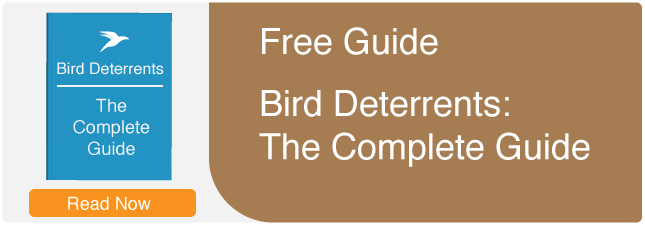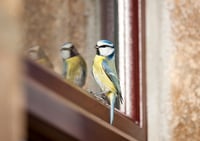 For homeowners and commercial property owners, bird control can be an important part of keeping a property clean and healthy. But situations can quickly get complicated in open spaces where it's difficult to apply structured control. Professionals can provide open space bird control solutions that don’t depend on nearby buildings and structures.
For homeowners and commercial property owners, bird control can be an important part of keeping a property clean and healthy. But situations can quickly get complicated in open spaces where it's difficult to apply structured control. Professionals can provide open space bird control solutions that don’t depend on nearby buildings and structures.
Open spaces plagued by birds vary widely and can create unsafe conditions for several different reasons. For instance, a flock of geese can leave an immense amount of droppings on the land surrounding popular bodies of water. Different bird breeds frequently use outdoor spaces (like runways) around airports for roosting and nesting. Stadiums offer a multitude of attractions for birds, as well. Finding the right solution for open space bird control requires attention to detail and many specific facts about each unique situation.
Identify the Problem and Bird Pressure
Before seeking a solution for open space bird control, it's important to determine the exact problem your customer is facing. In other words, ask, "What kind of bird is it, and what are they doing?" For example, pigeons in a plaza will require a different solution than geese on a golf course or public water area.
Questions to ask before searching for a solution include:
- What breed(s) of birds is/are involved?
- Are the birds migratory or local?
- What bird pressure is your situation at? (Brief gathering, daily roosting, or nesting?)
- How long have the birds been around?
- What attractions are there for the birds? (Food source, water, shelter, long-term territory?)
Different Strategies for Short-Term vs. Long-Term Open Space Bird Control
The location of your job site and the activities that take place there will have a major impact on the type of bird control that is best for your specific situation. Some areas require a full-time permanent solution. But others may only need a strategy that dissuades birds for a few weeks or months. For example, an agricultural environment is likely to have many attractions for birds and requires an ongoing solution. Similarly, a golf course in a mild climate could be an area that attracts birds year around. Birds present a critical safety hazard around airports, and entire runways are likely to require a permanent solution.
Short-term solutions are more likely to be for migratory birds or evolving situations where birds are new to the area. This can include flocks of migrating geese around bodies of water or even around country clubs or golf courses in colder climates. When the problem is seasonal or only for a brief period of time, you can use short-term solutions.
If you're unsure about the depth of your situation, a phone call to talk to one of our representatives can provide important details about your circumstances to help determine the right solution.
General Strategies for Open Space Bird Control
 After getting a firm understanding of your situation, you can begin to learn about the different types of bird control available for open spaces. There is a range of solutions available for both short-term and long-term open space bird control.
After getting a firm understanding of your situation, you can begin to learn about the different types of bird control available for open spaces. There is a range of solutions available for both short-term and long-term open space bird control.
Sound
Sound deterrents frighten birds away simply because they're loud or because they emulate a specific threat to birds. This is great for short-term situations that last for less than 30 days. During longer periods, birds become accustomed to the sounds and ignore them.
Sound deterrents can be a manual tool or automated system that works on a schedule. For example, a propane-fired cannon that makes a loud boom can scatter birds for a little while in an environment like an industrial complex or landfill. When the birds return, users can fire it again to repeat the process.
A more ongoing solution that can be paired with bird behavior to create an environment that seems threatening would be a squawk box like the BirdXPeller Pro. This programmable electric repellant gives loud distress calls that can cover long distances and frightens birds into thinking the area isn't safe. It can even create breed-specific noises.
Visual
Experts can pair visual deterrents with sound deterrents. Property owners can use them in both short-term and permanent situations. The most common visual deterrent for open spaces is the Eagle Eye. The device uses downward reflection to generate a visual threat to birds. So it's not considered an aviation hazard and can even be used at airports.
Physical
Long-term high-pressure situations generally call for physical deterrents. Experts design these solutions and tools to physically deter birds upon entry or block them from entering a specific area. Physical deterrents can be particularly challenging in open spaces, and multiple tools may be used in tandem for best results. This type of bird control is often referred to as avian control or avian migrant control. Some areas that could require physical solutions include fish farms, agricultural environments like orchards, stadiums, or airport runways.
Like other open space bird control solutions, physical deterrents will depend heavily on your unique situation. For instance, a fish farm will likely require grid wire or netting in certain areas to permanently keep out osprey and herons. Similarly, a retaining pond near a runway would probably benefit from netting to keep birds out during all seasons.
Agricultural Spaces
In agricultural environments or near large bodies of water, the space might be too open for netting. In these environments, a non-toxic taste deterrent applied with a sprayer can be used. The spray is effective against all breeds of birds. While completely harmless, the chemical (which smells similar to artificial grape flavoring) tastes and smells bad to birds. Typically, in high-pressure areas, groundskeepers will need to spray the ground daily or every other day. As birds begin to stay away, spray can be applied less frequently. There is no set time period in which birds respond to sprays. Ongoing maintenance demands depend on the birds' behavior.
Open-Air Venues
Bird control in stadiums can require a combination of methods for a complete solution. Daily spraying can address pest birds on open fields. Concession areas, on the other hand, can benefit from netting or other exclusionary methods. Frequent cleaning is a must to discourage birds from taking advantage of trash and food scraps that could be left in seating areas, fields, and areas prone to foot travel.
While it seems natural for birds to convene in open areas, pest birds can cause a multitude of hazards in some situations. Even in landfills, birds can pose a threat to the health of workers running machinery or completing other tasks. Open space bird control is effective when maintained. However, it may pose a bigger challenge for installers and professionals who maintain the area. If you have questions about bird control products for open spaces, get in touch with the bird control experts at Bird Barrier for more information.
About Bird Barrier
Bird Barrier is a leader in innovative technology designed to prevent birds from landing, roosting or nesting. We specialize in urban bird control to remove birds humanely and effectively. Our website, birdbarrier.com, hosts a wealth of content to help people understand and identify bird control solutions for various problems with pest birds. Please contact us if you need help with a bird related problem. You may also benefit from our free guide, Bird Deterrents: The Complete Guide.






